
Stefanie Akkerman moved from the Netherlands to Japan in 2013 with her Japanese husband and son. She jumped into the niche of Dutch tour guiding in Tokyo and Kamakura in 2015 and occasionally writes articles about all the great sights and activities Japan has to offer. She loves (Japanese) food, and to work that all off she goes diving, snorkeling, cycling, or hiking.
This post may contain some affiliate links. When you click through and make a purchase we may receive some commission, at no extra cost to you.
The way traditional houses look in a specific area in the world can often tell us a lot about what is considered important in that culture. Learning more about a country’s traditional dwellings teaches you a lot about how people used to live and sometimes still live there. This also applies to Japan, and traditional Japanese houses now inspire (interior) architects from all over the world with their ingenuity and beauty. What is a traditional Japanese house like, and what are their unique features? Let’s learn more about what you can expect to see in Japan’s long-established home styles!
- What is a Traditional Japanese House?
- Spaces in a Traditional Japanese House
- Floors in a Traditional Japanese House
- Furniture in a Traditional Japanese House
- Other Unique Features of Japanese Architecture
- If You have the Chance to Visit a Traditional House, be Sure You’re Prepared!
- Japan Wonder Travel Tours
- Other articles you might be interested in
What is a Traditional Japanese House?
A traditional Japanese house is called a ‘minka’ (民家), which literally means ‘house of the people’ as this was a house that was inhabited by people of the old middle classes: farmers, artisans, and merchants. While individual styles varied per region, there were a few characteristics that kept coming back in a minka’s architecture. Minimalism, tranquility, and the incorporation of natural elements in the home’s living space and view are examples of features that are basic principles in Japanese architecture.
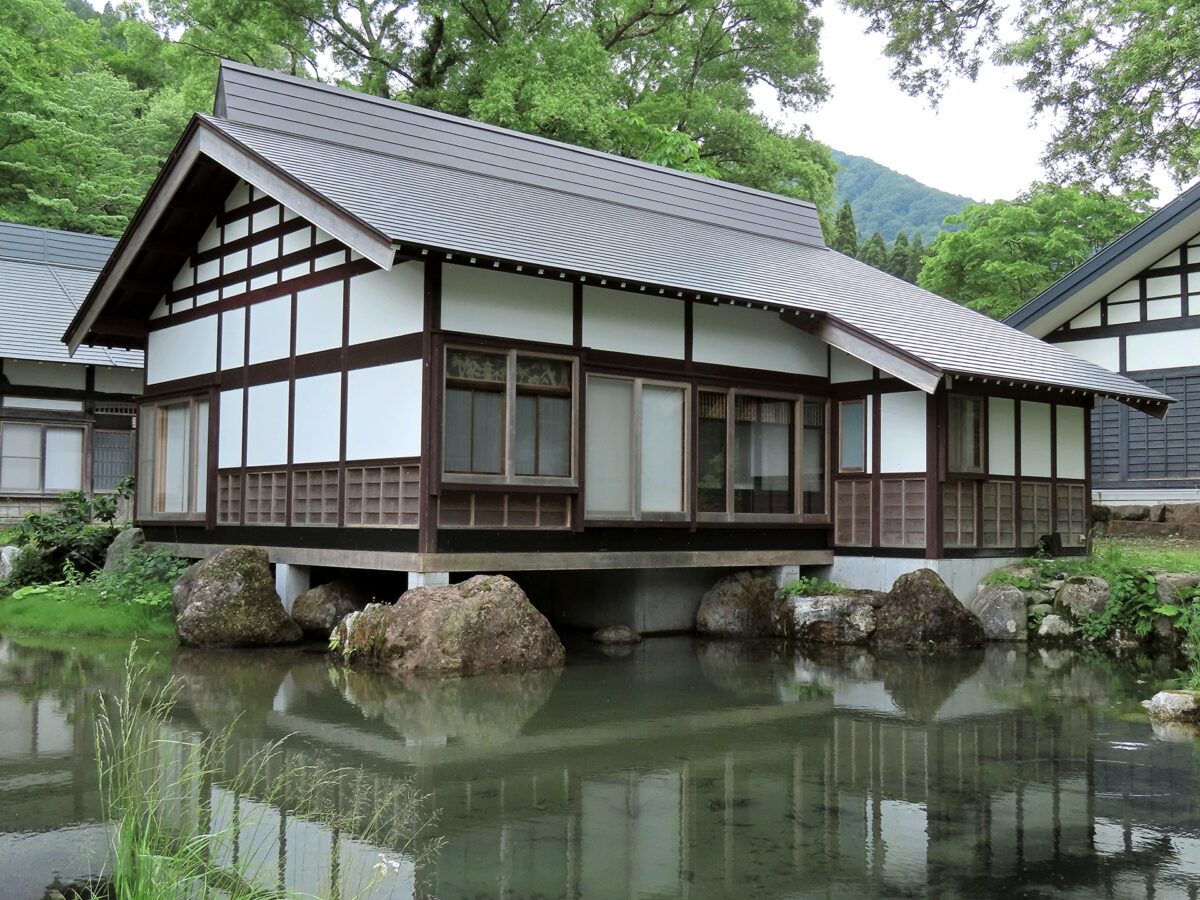
Nowadays, there are still preserved minka in existence, some of the most famous ones are in Shirakawago and the Kiso Valley. Most regular people in Japan nowadays live in modern housing though, which often means that they live in a simple prefab house or an apartment. But even in these modern homes that don’t look very traditional from the outside, you can still see many typical features of the traditional Japanese houses when you go inside and know what to look for!
Spaces in a Traditional Japanese House
Upon entering, the first thing you will always see is a genkan (玄関) space. This is a clearly marked area where you have to take off your shoes. Usually there is a closet or dedicated space where all the shoes go. In some homes, the genkan area is a bit lower than the rest of the house to make the difference even more clear. It is important to only wear your outdoor shoes in the genkan area, and never touch the rest of the floors of the house with your dirty shoes. Many people have indoor slippers to keep their feet from getting cold to use in the rest of the house. The genkan space is one of the features that has survived throughout the ages and is still present in almost all Japanese homes today.
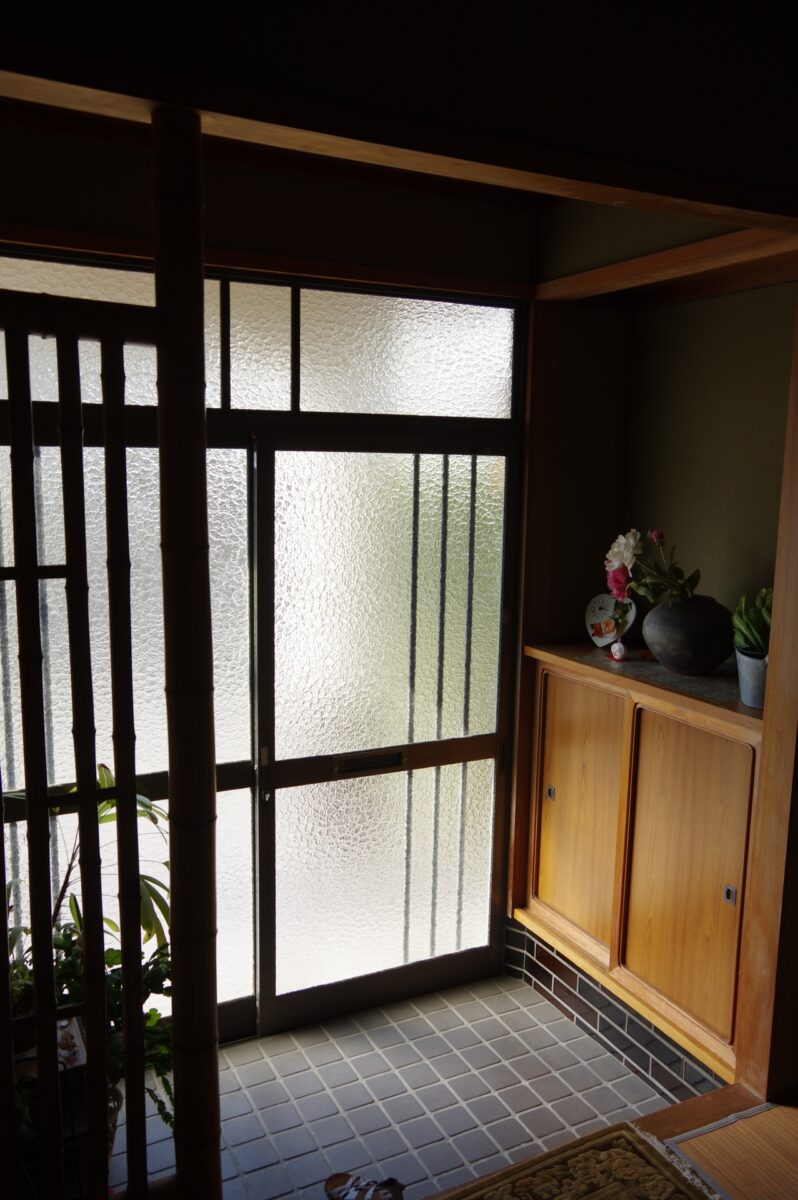
Another characteristic that has been around for centuries and is still found in many houses in Japan is the ofuro (お風呂), which means ‘bath’. In Japan, the bath area is generally separate from the toilet and also from the sink area. Indeed, the bath itself has a completely dedicated space that is waterproof. Taking a bath every evening is quite normal in Japan, so it only makes sense that the bath has a prominent place in a home. The whole family uses the same water to bathe, so they first use the shower which is in the same room before they step into the bath. In the end, this practice actually saves a lot of water and gas!
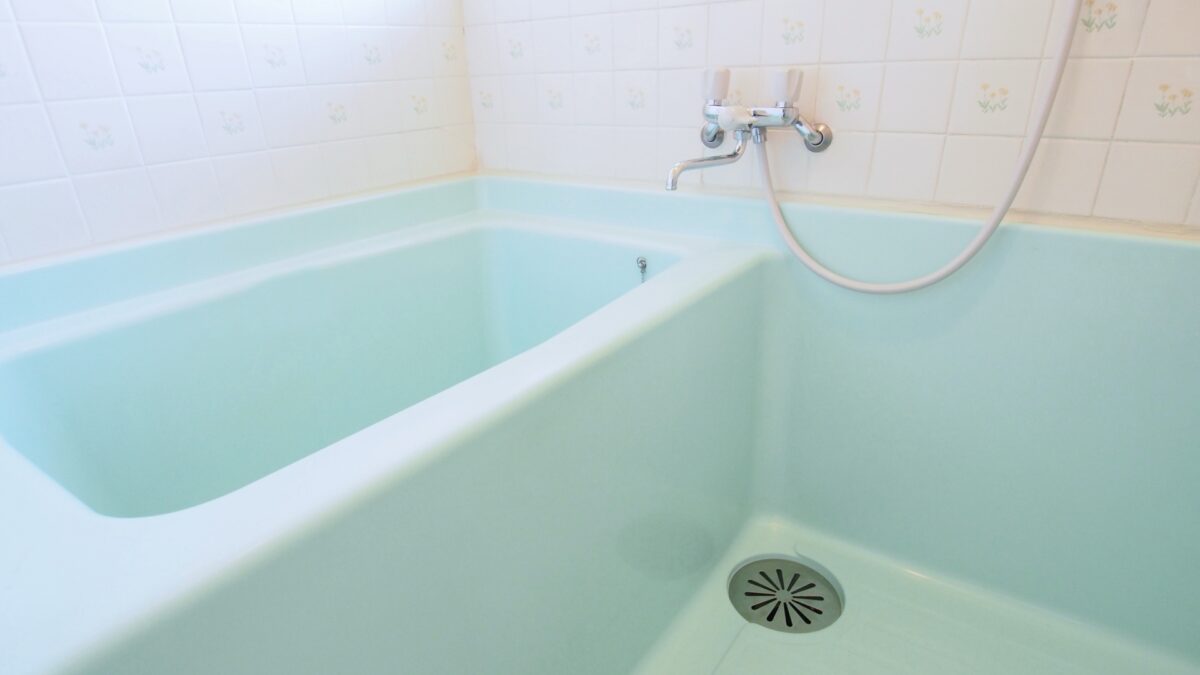
A feature that you won’t usually see anymore but used to be ubiquitous in old traditional houses is the engawa, a space that is neither considered outside or inside but is in between. An engawa is a place on the edge of a room that is either a hallway (closed on all sides) or a porch (open on one side) that has a wooden floor. It is a great space to enjoy the fresh air regardless of the weather.
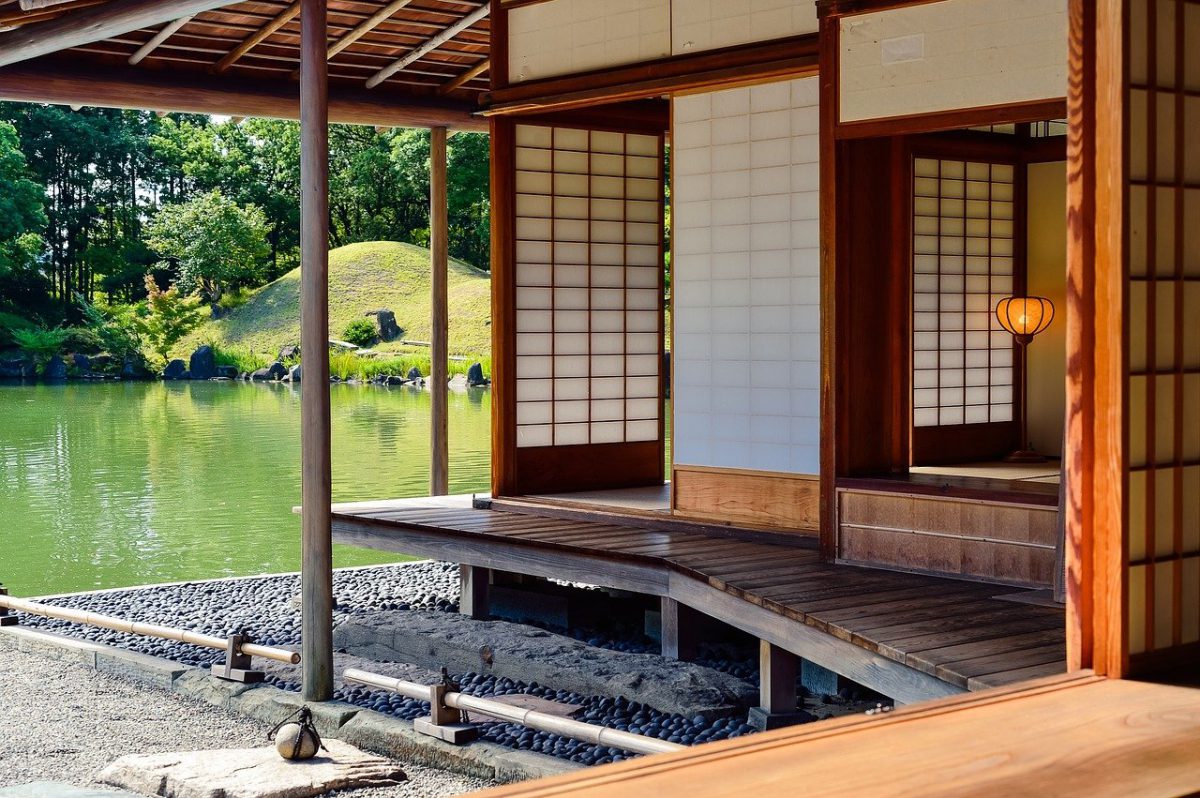
Floors in a Traditional Japanese House
A traditional house has most floorspace in the house covered with tatami mats. Mainly located in the living rooms and bedrooms, these mats made of rice straw are comfortable to sit on and provide good isolation from hot weather. Whereas more than half of the floors of traditional houses were covered with tatami mats, modern housing still often has one tatami room. Many times, if you buy a brand-new apartment in Japan you can opt to have one tatami room or make all rooms ‘western style’ with wooden or vinyl flooring. Sometimes the tatami room is used for enjoying a cup of tea, but more often it becomes the designated bedroom. Quite a few Japanese people prefer to sleep on a futon on the floor, and in that case tatami mat flooring is the best choice for comfortable sleeping.

A space called ‘tokonoma’ (床の間), which can be compared to a western-style alcove, is a slightly elevated area of about 2 square meters where a minimalist display of art or decorations is exhibited. In the tea ceremony, guests visit tokonoma firstly because it is a very important area. The tokonoma is usually located in a reception room or guest room, and it is the focal point of a room. Most apartments don’t have a tokonoma because the rather limited space is used in a more utilitarian way, but modern single family houses in Japan still often come with a tokonoma in place.
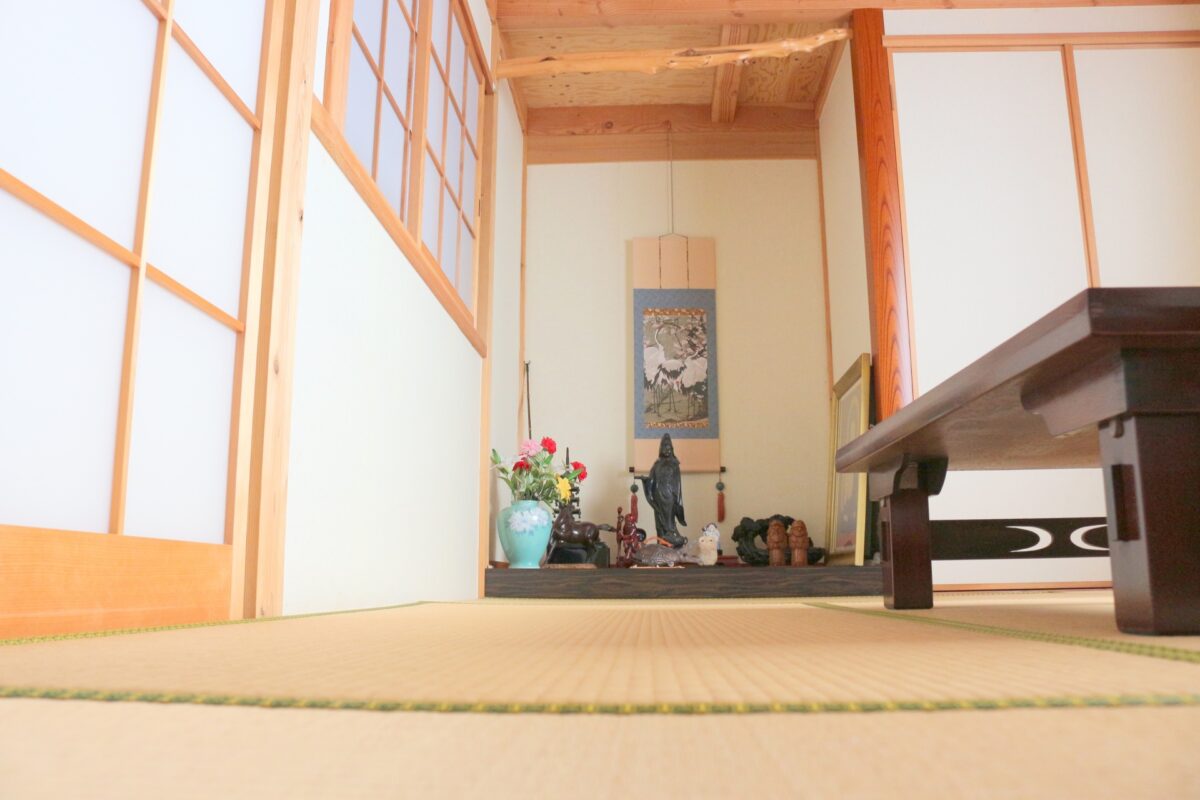
If you have been to the traditional houses in Shirakawago, you have probably seen the sunken hearths that take up a central place in the homes. They are called ‘irori’ (囲炉裏), and they are used for cooking and for heating. Obviously, irori are not really seen in modern houses similarly to how old-fashioned fireplaces gave way to central heating or modern fireplaces, and you can mainly see them in museum-style traditional houses.
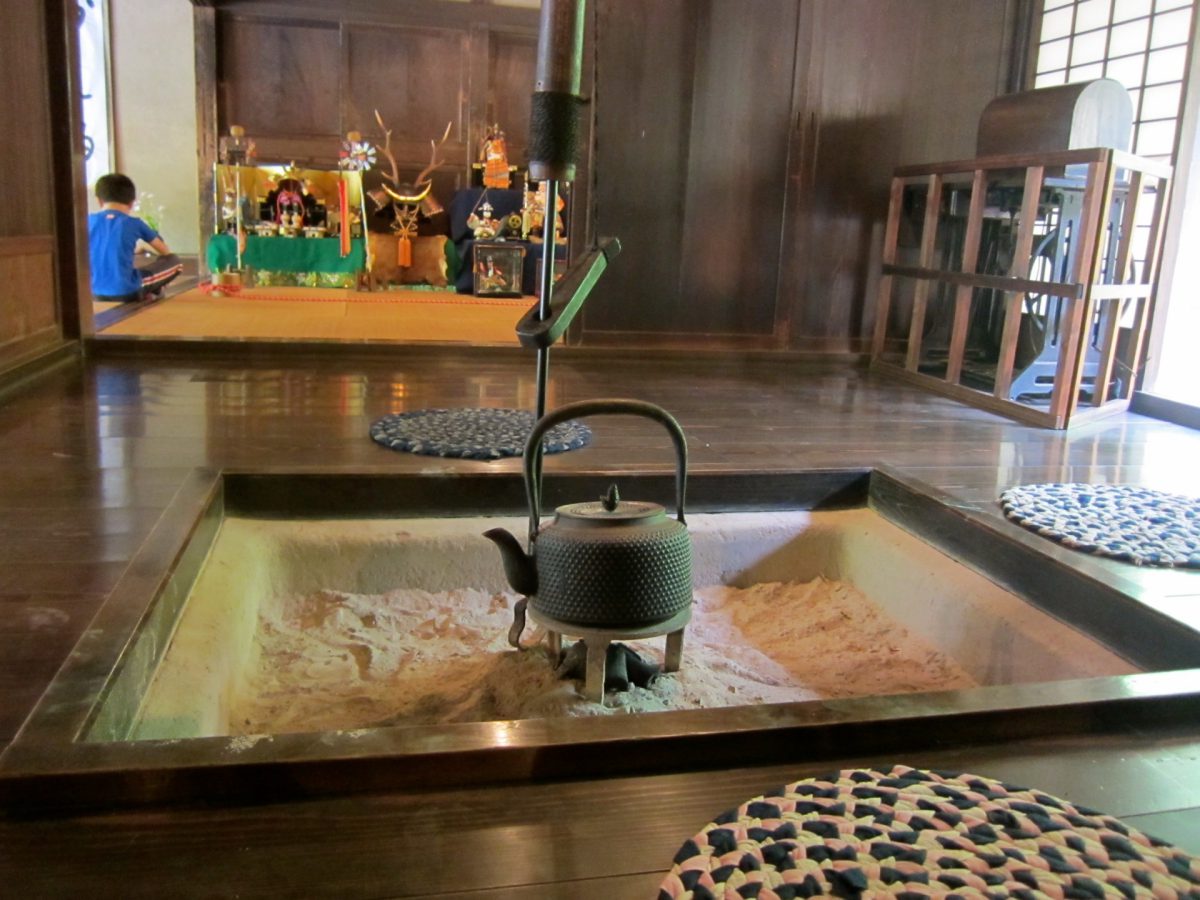
Furniture in a Traditional Japanese House
There is also furniture that is typically Japanese and found in many Japanese homes of the past and present. The kotatsu (こたつ) is a wonderful piece and like an elaborate electric blanket that you can easily spend all day and night under when it is freezing outside. Kotatsu look like low tables with heavy blankets attached all around it and there are heating elements underneath that keep everyone’s lower body comfortable and warm when you sit under it. Cozy nights spent under the kotatsu are a typical way to relax for many Japanese people during the colder seasons. Honestly, all Japanese have experienced falling asleep under kotatsu because it’s so comfortable.
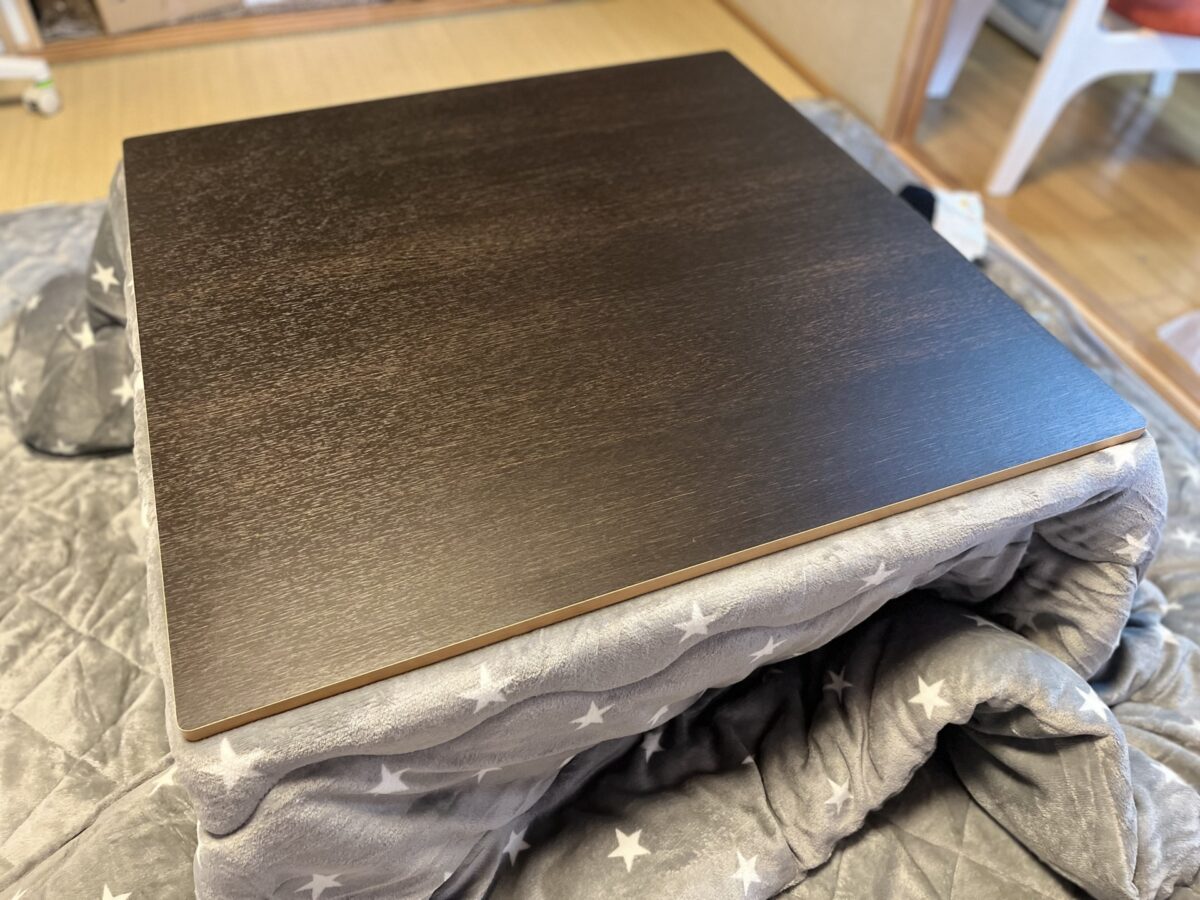
A chabudai is a very low, short-legged table that is usually used to enjoy tea or a snack. As you sit on a zabuton pillow or directly on the tatami floor, it is not the kind of table you want to sit at for very long periods of time. It is a very handy item in a Japanese house though, as it is usually collapsable and easy to store away because of its small size. People have lived in small-sized dwellings for centuries in Japan, and therefore having a portable table like this that can be taken out and stored away in a jiffy has been popular and is still common nowadays.

Other Unique Features of Japanese Architecture
Another unique accessory in an old Japanese home or shop is the ‘kamidana’ (神棚), which literally means ‘god shelf’. It is a small space near the ceiling where a tiny shrine sits, and it is used as a miniature household shrine that protects the home and the people in it from adverse events. Nowadays, you still see them at more traditional shops around Japan.
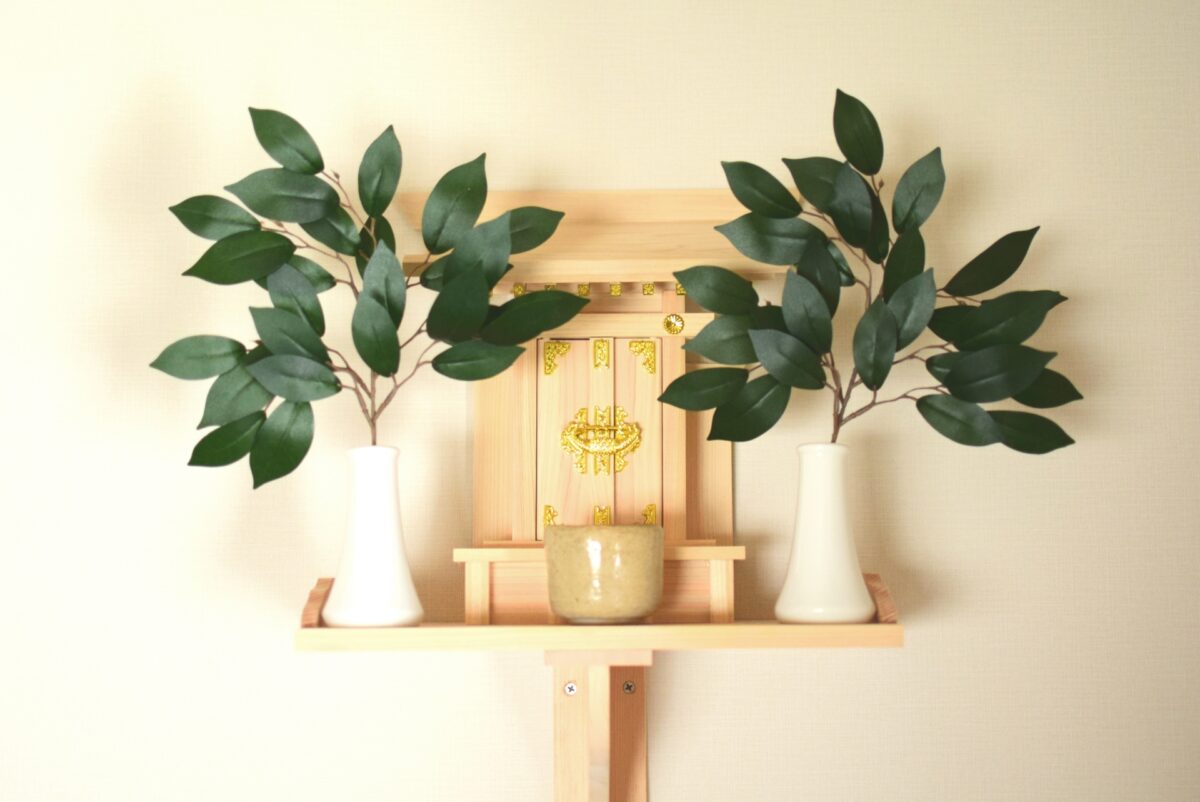
And finally a very stylish feature that you often see in Japanese movies: the shoji that is used as a door, window, or room divider. Shoji have a characteristic wooden frame with washi paper sheets on them. They are used like curtains to block people from looking inside without blocking out the light and as a partition to separate a room in different areas for privacy. While many older homes have shoji, they aren’t used much anymore in newer houses or apartments, unless the builders want to add a traditional accent to the home.
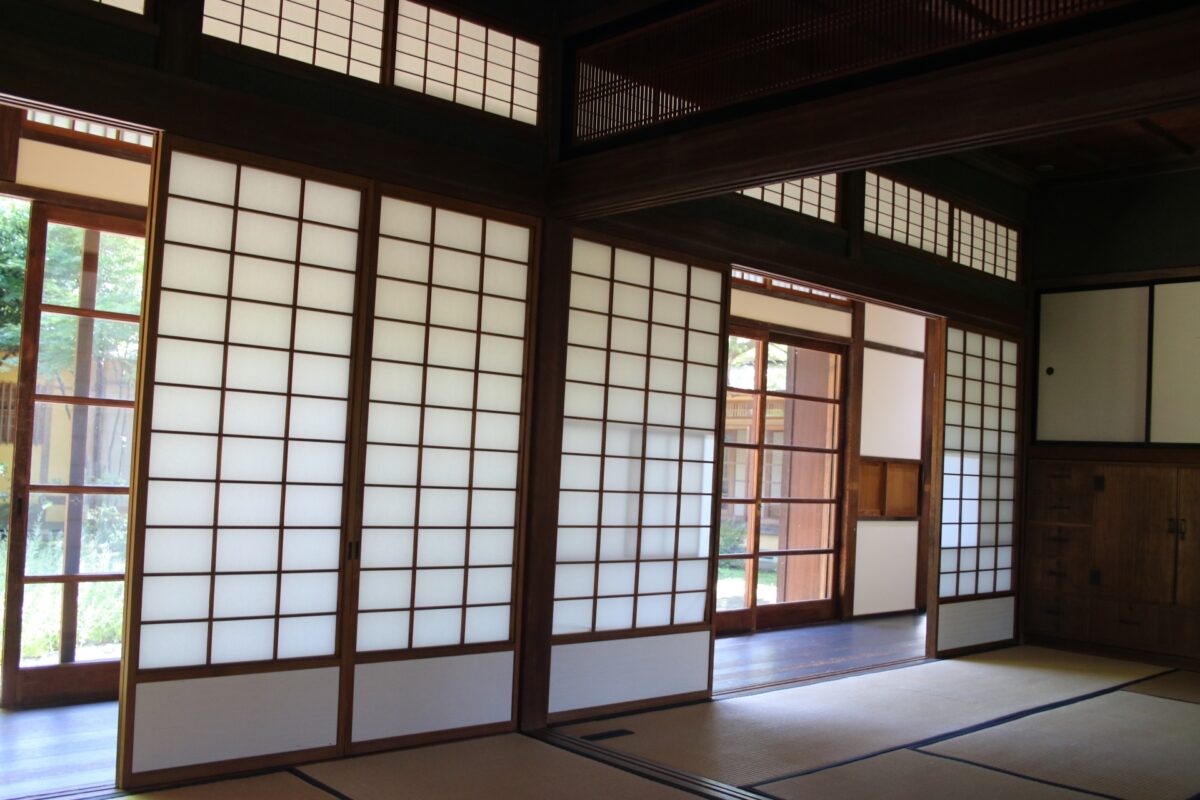
If You have the Chance to Visit a Traditional House, be Sure You’re Prepared!
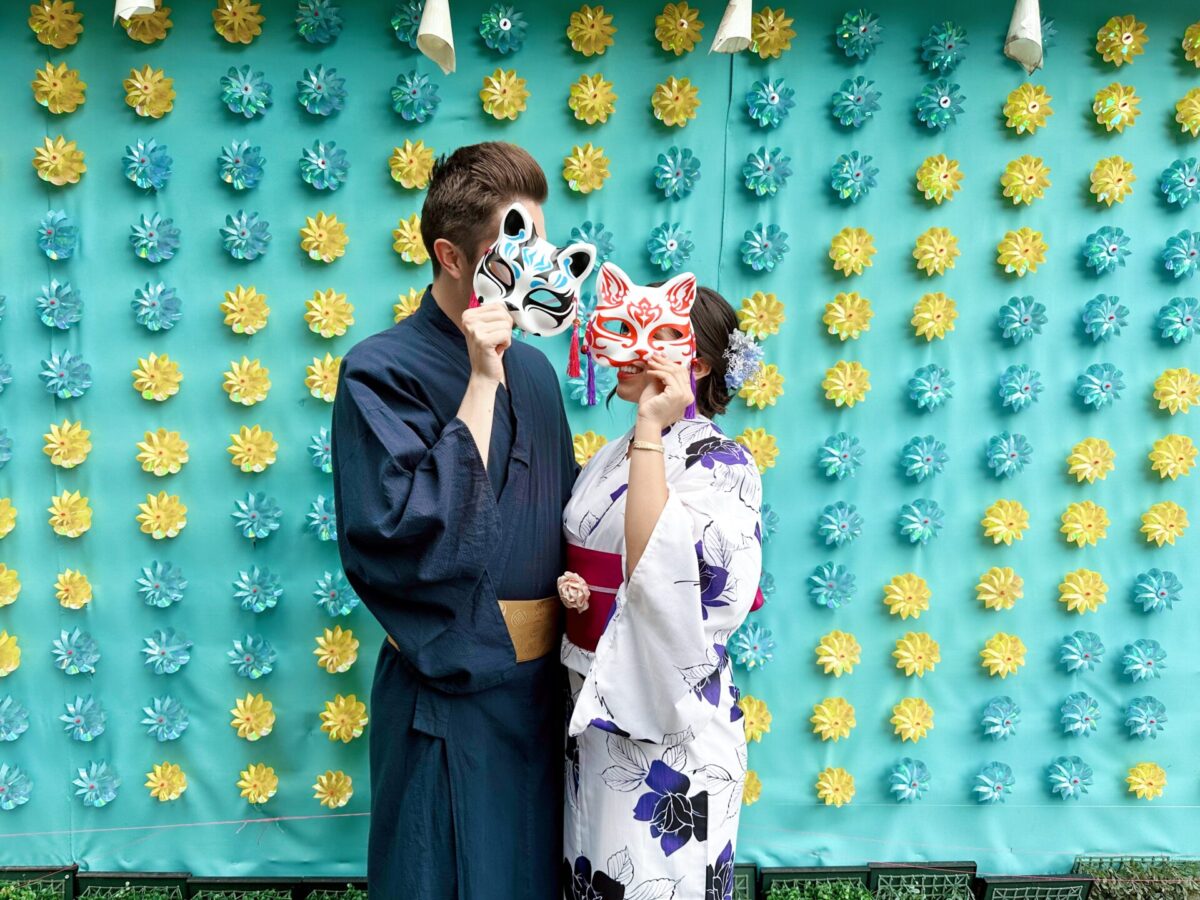
Sporting a kimono is the best way to get the most out culturally rich experiences like this! Renting a kimono for the day is a great experience no matter where you find yourself adventuring through Japan. Wargo, a reputable kimono rental company has got your back:
Tokyo
Kyoto
Osaka
Ishikawa
Saitama
Japan Wonder Travel Tours
Japan Wonder Travel is a travel agency that offers guided tours throughout Japan.
From private walking tours to delicious Food and Drink tours, we can help you organize the best tours just for you! If you want to explore Japan and learn more about the history and backstories of each area you are visiting, our knowledgeable and friendly English speaking guides will happily take you to the best spots!
In addition, we can provide you with any assistance you may need for your upcoming trip to Japan, so please feel free to contact us if yu have any questions or need some help!
▶Tokyo Tsukiji Fish Market Food and Drink Tour
Explore the most lively and popular fish market in Tokyo and try some of the local’s favorite street foods and sake with one of our friendly and knowledgeable English speaking guides!

▶Tokyo 1–Day Highlights Private Walking Tour (8 Hours)
There’s no better way to explore an area than taking a tour with a knowledgeable local guide. You will have the chance to learn about the history and interesting background stories of Tokyo, as well as discover some hidden gems which can be hard to do without a guide.

▶Mt. Fuji Day Trip Bus Tour from Tokyo
Experience the breathtaking views of Mt. Fuji by visiting the highlights of the area on our guided sightseeing bus tour! Departing from Shinjuku in central Tokyo, you can travel comfortably to all of the best spots in the area by bus.

Follow us on Instagram, Facebook, Twitter, and TikTok for more travel inspiration. Or tag us to get featured!
Happy traveling!
Stay informed of the best travel tips to Japan, the most exciting things to do and see, and the top experiences to have with the Japan Wonder Travel Newsletter. Every week we will introduce you to our latest content.




